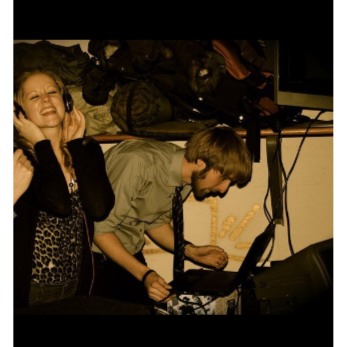Jason D Gregg
age ~58
from Berthoud, CO
- Also known as:
-
- Jason Dale Gregg
- Jason D Greeg
- Gregg Jason
- Phone and address:
-
5233 Bella Vista Dr, Longmont, CO 80503
(720)4949891
Jason Gregg Phones & Addresses
- 5233 Bella Vista Dr, Longmont, CO 80503 • (720)4949891
- Berthoud, CO
- Tomahawk, WI
- Greeley, CO
- 314 20Th St, Oklahoma City, OK 73103
- Portland, OR
- Boulder, CO
- Edmond, OK
- 5233 Bella Vista Dr, Longmont, CO 80503
Us Patents
-
Seek Recovery Using Different Servo Pulse Data Qualifications Modes
view source -
US Patent:6347019, Feb 12, 2002
-
Filed:Feb 22, 2000
-
Appl. No.:09/510728
-
Inventors:Jason D. Gregg - Oklahoma City OK
-
Assignee:Seagate Technology LLC - Scotts Valley CA
-
International Classification:G11B 5584
-
US Classification:360 7804, 360 46
-
Abstract:Apparatus and method for compensating for servo data distortion in a disc drive. During a seek wherein a head is moved from an initial track to a destination track on a disc surface, servo position data are decoded on intermediary tracks by generating nominally redundant positive and negative digital pulse streams from positive and negative peaks in a servo readback signal. The positive and negative digital pulse streams are combined using a default Boolean logical operator (such as an AND operator) to qualify pulses in a first output digital pulse stream used to determine head position. When distortion arises that prevents correct detection of head position from the first output digital pulse stream, a second Boolean logical operator (such as an OR operator) is switched in to generate a second output digital pulse stream. Depending on the type of distortion, a selected one of the operators will provide improved servo data decoding.
-
Reducing Self-Excited Mechanical Resonances In A Disc Drive
view source -
US Patent:6392833, May 21, 2002
-
Filed:Jul 13, 1999
-
Appl. No.:09/352487
-
Inventors:Roy L. Wood - Yukon OK
Jason D. Gregg - Oklahoma City OK -
Assignee:Seagate Technology, LLC - Scotts Valley CA
-
International Classification:G11B 1546
-
US Classification:360 7303, 360 69
-
Abstract:Apparatus and method for improved operational performance of a disc drive by temporarily decreasing disc rotational velocity to reduce self-excited mechanical resonance established within the drive. The disc drive is first initialized by applying current to the spindle motor to accelerate the disc from rest to a nominal operational rotational velocity. Once initialized, the disc drive is operated in a normal mode, as the temperature of the drive increases from an initial, ambient temperature to an equilibrium temperature. During such operation, when the disc drive detects the presence of a self-excited mechanical resonance, the disc drive proceeds to temporarily decrease the rotational velocity of the disc to a reduced velocity to reduce the effects of the self-excited mechanical resonance. Thereafter, the rotational velocity of the disc is restored to the nominal velocity provided the self-excited mechanical resonance is no longer detected.
-
Disc Drive Method And Apparatus For Dynamically Adjusting Seek Operations
view source -
US Patent:6445531, Sep 3, 2002
-
Filed:Oct 8, 1999
-
Appl. No.:09/415787
-
Inventors:Mark A. Gaertner - Woodbury MN
Paul A. Galloway - Prior Lake MN
Bruce J. Routh - Eden Prairie MN
Zip Cotter - Eden Prairie MN
Daniel C. Kuhl - Saint Paul MN
Jason D. Gregg - Oklahoma City OK -
Assignee:Seagate Technology LLC - Scotts Valley CA
-
International Classification:G11B 5596
-
US Classification:360 7806
-
Abstract:A method of controlling an actuator in a disc drive to move a data head to implement an access in accordance with the invention includes determining a first rotational position corresponding to a rotational position of the data head when the access will start and determining a second rotational position corresponding to a rotational position of the data head at a destination of the access. Subsequently, an access time required to move the data head from the first rotational position on a current or initial track to the second rotational position on a destination track using a fastest of multiple seek profiles is determined. A slower or slowest of the multiple seek profiles which can be used to move the data head from the first track to the second track within the access time is determined. Subsequently, the actuator is controlled using the determined slower or slowest of the multiple seek profiles to implement the access. In addition, a disc drive is provided.
-
Method And System For Filtering Force Constant Table For Accurate Torque Modeling
view source -
US Patent:6453331, Sep 17, 2002
-
Filed:Jul 30, 1999
-
Appl. No.:09/364465
-
Inventors:Matthew Chad Burton - Edmond OK
Jason Dale Gregg - Oklahoma City OK -
Assignee:Seagate Technology LLC - Scotts Valley CA
-
International Classification:G06F 1710
-
US Classification:708300
-
Abstract:A method and system of filtering an unfiltered servo torque table of a disc drive where a plurality of data points are added to the beginning and end of the unfiltered servo table and the table is then shifted by a valve and then filtered.
-
Servo Gain Optimization Using A Variable Convergence Factor
view source -
US Patent:6490120, Dec 3, 2002
-
Filed:Jul 13, 1999
-
Appl. No.:09/352461
-
Inventors:Matthew C. Burton - Edmond OK
Jason D. Gregg - Oklahoma City OK -
Assignee:Seagate Technology LLC - Scotts Valley CA
-
International Classification:G11B 5596
-
US Classification:360 7807, 360 7809
-
Abstract:Apparatus and method for optimizing a gain of a disc drive servo circuit, the gain used to control the magnitude of current applied by the servo circuit to a voice coil motor to position a head adjacent tracks of a disc. The servo circuit includes a servo processor which selects an initial value of the gain, and then proceeds to perform a gain convergence operation wherein the head is repeatedly moved across the disc over a number of passes and position error is accumulated during each pass. The accumulated position error is used along with a scale factor to converge the gain from an initial gain value to a final, optimal gain value. The scale factor is variable and is also converged over the successive number of passes from an initial value to a final, nominal value, in order to decrease the time required to obtain the final, optimal gain value.
-
Model Reference Generator For A Disc Drive
view source -
US Patent:6574070, Jun 3, 2003
-
Filed:Dec 21, 2001
-
Appl. No.:10/034814
-
Inventors:Jason D. Gregg - Oklahoma City OK
-
Assignee:Seagate Technology LLC - Scotts Valley CA
-
International Classification:G11B 5596
-
US Classification:360 7809
-
Abstract:An apparatus and method optimizing a model reference generator of a servo circuit to substantially mimic actual read/write head positions are disclosed. The servo circuit includes a microprocessor with associated random access memory storing a current profile and a set of optimized filter coefficients. The coefficients optimize a delay length of a finite impulse response filter, which delays passage of the current profile to a double integrator embedded in the microprocessor. The double integrator generates the substantially mimicked head positions. The filter coefficients are optimized by first, generating a model reference trajectory vector with a length determined by a set of empirically determined filter coefficients, then seek in an open loop mode while applying the selected current profile to the servo circuit to determine an actual trajectory vector, and replacing the empirically determined filter coefficient with an optimized filter coefficient determined from a mathematical comparison of the vector trajectories.
-
Adapting Logical Track Addresses In Relation To Head Offsets
view source -
US Patent:6775090, Aug 10, 2004
-
Filed:Oct 26, 2001
-
Appl. No.:10/015144
-
Inventors:James W. DuLaney - Oklahoma City OK
Jeffery D. Andress - Oklahoma City OK
Jason D. Gregg - Oklahoma City OK
Wonbo Shim - Edmond OK
Roy L. Wood - Yukon OK -
Assignee:Seagate Technology LLC - Scotts Valley CA
-
International Classification:G11B 5596
-
US Classification:360 7702
-
Abstract:Method and apparatus for improving data transfer rate performance of a disc drive data handling system having a plurality of transducing heads adjacent a corresponding plurality of data recording surfaces. Concentric tracks on each of the recording surfaces are provided with a physical track address determined by servo data written to each track. Logical track addresses are assigned to the tracks by positioning a first head adjacent a selected location on the corresponding recording surface, measuring a head offset value for each of the remaining heads, and assigning the logical track addresses on each data recording surface in relation to the measured head offset values. The logical cylinders include tracks with different physical track addresses, and the tracks in each logical cylinder are nominally aligned with the heads. This reduces the need for corrective seeks after head switching within the same logical cylinder.
-
Performance In A Data Storage Device Using Head-To-Head Offsets In Access Command Scheduling
view source -
US Patent:6848019, Jan 25, 2005
-
Filed:Oct 24, 2000
-
Appl. No.:09/696269
-
Inventors:Jack A. Mobley - Oklahoma City OK, US
Jason D. Gregg - Oklahoma City OK, US
Kenny T. Coker - Mustang OK, US
Leonard D. Doss - Oklahoma City OK, US -
Assignee:Seagate Technology LLC - Scotts Valley CA
-
International Classification:G06F 1200
-
US Classification:711111, 360 7801
-
Abstract:Apparatus and method for improving disc drive performance by compensating for head-to-head offsets when scheduling a plurality of pending access commands. A disc drive includes a plurality of recording surfaces on which a plurality of concentric data tracks are defined. A servo circuit performs seeks to move a plurality of heads from an initial track to a destination track. A positional offset between each of the plurality of heads is measured and applied to an estimated seek length to calculate a corrected seek length. A corrected seek time is calculated from a seek profile table in relation to corrected seek length. The corrected seek time is used by a control processor to schedule the access commands stored in the memory.
Resumes

Firmware Technologist
view sourceLocation:
Longmont, CO
Industry:
Computer Hardware
Work:
Neubloc since May 2011
Firmware Engineer
Seagate Technology Feb 2009 - May 2011
Firmware Engineer
Seagate Technology Feb 2007 - Feb 2009
Firmware Engineering Manager
Seagate Technology Jan 2006 - Feb 2007
Systems Engineer
Seagate Technology 1995 - 2005
Servo Engineer
Firmware Engineer
Seagate Technology Feb 2009 - May 2011
Firmware Engineer
Seagate Technology Feb 2007 - Feb 2009
Firmware Engineering Manager
Seagate Technology Jan 2006 - Feb 2007
Systems Engineer
Seagate Technology 1995 - 2005
Servo Engineer
Education:
University of Oklahoma 1992 - 1994
MS, Electrical Engineering University of Oklahoma 1989 - 1992
BS, Electrical Engineering
MS, Electrical Engineering University of Oklahoma 1989 - 1992
BS, Electrical Engineering
Skills:
Technology
Firmware
Ssd
Firmware
Ssd

Jason Gregg
view source
Jason Gregg
view source
Jason Gregg
view source
Jason Gregg
view source
Jason Gregg
view sourceIndustry:
Motion Pictures And Film

Jason Gregg
view source
Jason Gregg
view sourceLocation:
United States
Medicine Doctors

Jason A. Gregg
view sourceSpecialties:
Psychiatry
Work:
Saint Elizabeth PhysiciansSaint Elizabeth Physicians Behavioral Health
13260 Service Rd, Walton, KY 41094
(859)3015901 (phone), (859)3015940 (fax)
13260 Service Rd, Walton, KY 41094
(859)3015901 (phone), (859)3015940 (fax)
Languages:
English
Description:
Mr. Gregg works in Walton, KY and specializes in Psychiatry.

Jason A. Gregg
view sourceSpecialties:
Podiatric Medicine
Work:
Kentucky Foot & Ankle
1401 Harrodsburg Rd STE B295, Lexington, KY 40504
(859)2765349 (phone), (859)2765340 (fax)
1401 Harrodsburg Rd STE B295, Lexington, KY 40504
(859)2765349 (phone), (859)2765340 (fax)
Languages:
English
French
Vietnamese
French
Vietnamese
Description:
Mr. Gregg works in Lexington, KY and specializes in Podiatric Medicine. Mr. Gregg is affiliated with Saint Joseph Hospital East and Saint Joseph Hospital West.
Plaxo

Jason Gregg
view sourceWichita PC Solutions

Jason Gregg
view source
Jason Gregg
view source
Jason Gregg
view source
Jason Gregg
view source
Jason A Gregg
view source
Jason Gregg
view source
Jason Gregg
view source
Jason Gregg
view sourceGoogleplus

Jason Gregg
Work:
Finger Lakes Instrumentation, LLC. - Technical Writer (2012)
Education:
SUNY Broome - Engineering

Jason Gregg
Work:
Shonbeks - Machinist

Jason Gregg
Tagline:
Gregger

Jason Gregg (Geekshop)

Jason Gregg

Jason Gregg

Jason Gregg

Jason Gregg
Myspace
News

'Lost' pigeon found after more than a century | Cornell Chronicle
view source- It was an experience of a lifetime working with Fergusson Islanders to find the pheasant pigeon and giving talks at schools and villages about our search was a highlight, said Jason Gregg, a co-leader of the expedition. Kids were whispering the local name of the bird Auwo and everyone was tal
- Date: Nov 17, 2022
- Category: World
- Source: Google
Classmates

Jason Gregg
view sourceSchools:
Battle Ground Academy Franklin TN 1986-1990
Community:
Sam Brantley, William Gant, Cheryl O Donnell, Gaye Glisson

Jason Gregg
view sourceSchools:
Forrest High School Chapel Hill TN 2000-2004
Community:
Rodney Ellison, Billie Jacobs

Jason Gregg
view sourceSchools:
Dreher High School Columbia SC 1993-1997
Community:
Jill Guscio, Billie Schumann

Jason Gregg
view sourceSchools:
Spring Valley High School Spring Valley WI 1988-1992
Community:
Michael Elsenpeter, Linda Haller, Kim Jensen

Jason Gregg
view sourceSchools:
Cocke County High School Newport TN 1996-2000
Community:
Beth Cruz, Randall Clevenger, Debbie Holt

Jason Gregg
view sourceSchools:
Berrien Springs High School Berrien Springs MI 1984-1988
Community:
Ted Summerfelt, Roger Kelm

Jason Gregg
view sourceSchools:
Macon Academy Tuskegee AL 1989-1993
Community:
Robert May, Donnie Pierce, Leigh Randall

Jason Gregg
view sourceSchools:
Saint Elizabeth School Wilmington DE 1987-1991
Community:
Nanc Carnes, Geraldine Fischetti, Betty Fleming
Youtube
Get Report for Jason D Gregg from Berthoud, CO, age ~58





